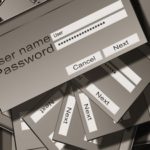Mobile Security Tips For Every Business
Posted by aonenetworks On April 6, 2015 With smartphones becoming more and more about data storage and access than just simply communication, businesses are finding that these “pocket computers” are proving to be not just handy, but vital, to their survival in a need-it-now world. But revelations that tech companies were sharing emails, text messages, and other information with the National Security Agency in compliance with their program to track possible terrorist threats has left people concerned about securing their personal data. And for many small business owners who may be using their personal phones for work, as well, there’s the simple concern about making sure the personal stuff stays personal to maintain a professional appearance to colleagues and clients.
With smartphones becoming more and more about data storage and access than just simply communication, businesses are finding that these “pocket computers” are proving to be not just handy, but vital, to their survival in a need-it-now world. But revelations that tech companies were sharing emails, text messages, and other information with the National Security Agency in compliance with their program to track possible terrorist threats has left people concerned about securing their personal data. And for many small business owners who may be using their personal phones for work, as well, there’s the simple concern about making sure the personal stuff stays personal to maintain a professional appearance to colleagues and clients.
Although Apple CEO Tim Cook stated that the company has never built “a back door” into its products to allow government access and has not let the feds into its servers, Apple suffered another embarrassing public blow to its security cred when compromising personal photos of celebrities were hacked from its iCloud service. Since then, Apple has been especially determined to reassure customers of its commitment to security. To that end, it raised eyebrows by releasing a new privacy policy for iOS8 stating that, once users set up a passcode to lock their iPhone or iPad, Apple cannot bypass it, even if requested to do so by law enforcement. This passcode can optionally be used in concert with a fingerprint ID for an extra level of security, which should instill more confidence in users of Apple Pay and other potentially sensitive apps and services.
For its part, Google has announced that data will now be automatically encrypted as of the next Android update. Encryption was always available to Android users who chose to turn it on (or who knew it was there in the first place), but it will be the default from now on. Avoiding a little nefarious data mining by the competition should your misplaced cell phone fall into the wrong hands at a convention will now be easier.
Corporate espionage aside, the most common use of privacy settings will probably be to keep personal photos from making the wrong impression. Depending upon the type of phone you have, there are several ways to hide your photos, so that passing your phone to a client to browse pictures of a jobsite doesn’t also allow them to also peruse candid shots from your bachelor party.
Apple’s iOS8 offers the option within the Photos app to hide photos by selecting the pic and choosing the Hide option. Photos will be copied to a file called Hidden, where you can go to unhide them, if desired. This protects them from being seen only by a casual observer, however: The photos can still be found should someone have the chance to go through individual albums, so this is most useful if the device remains in your sight.
Samsung’s Galaxy devices, such as the S5 phone, the Tab S tablet, and the upcoming Note phone have a “Private Mode” that can be turned on in the Settings section. While it is on, you can select photos, videos, and even music and audio recordings to “move to Private”. You then turn it off to save the settings and lock down your information. This is much more secure than the “Hide” option for the iOS and its rather hilariously helpful “Hidden” folder-the info hidden on Galaxy devices is really hidden, as though it never existed in the first place. Only by going back into Private Mode-which requires a passcode or fingerprint ID-can the hidden info be accessed again.
LG’s G3 phone has a “guest mode” so that you can set access levels for a friend or colleague who borrows your phone. Access not just to individual photos or messages but to entire apps can be allowed or denied, such as the use of email or texting. The Gallery app, for example, would allow your employee to take photos, which would be stored in a “Guest” album, without giving him or her access to the Photos app, through which all your stored pictures would be accessible.
Overall, companies are increasingly making privacy and security a priority, but individuals make the decision whether and how to employ the various settings, including things like switching off the programs that report your location in order to give you information on things like local weather forecasts and restaurant locations. It’s best to know your options, whether or not you choose to use them.





